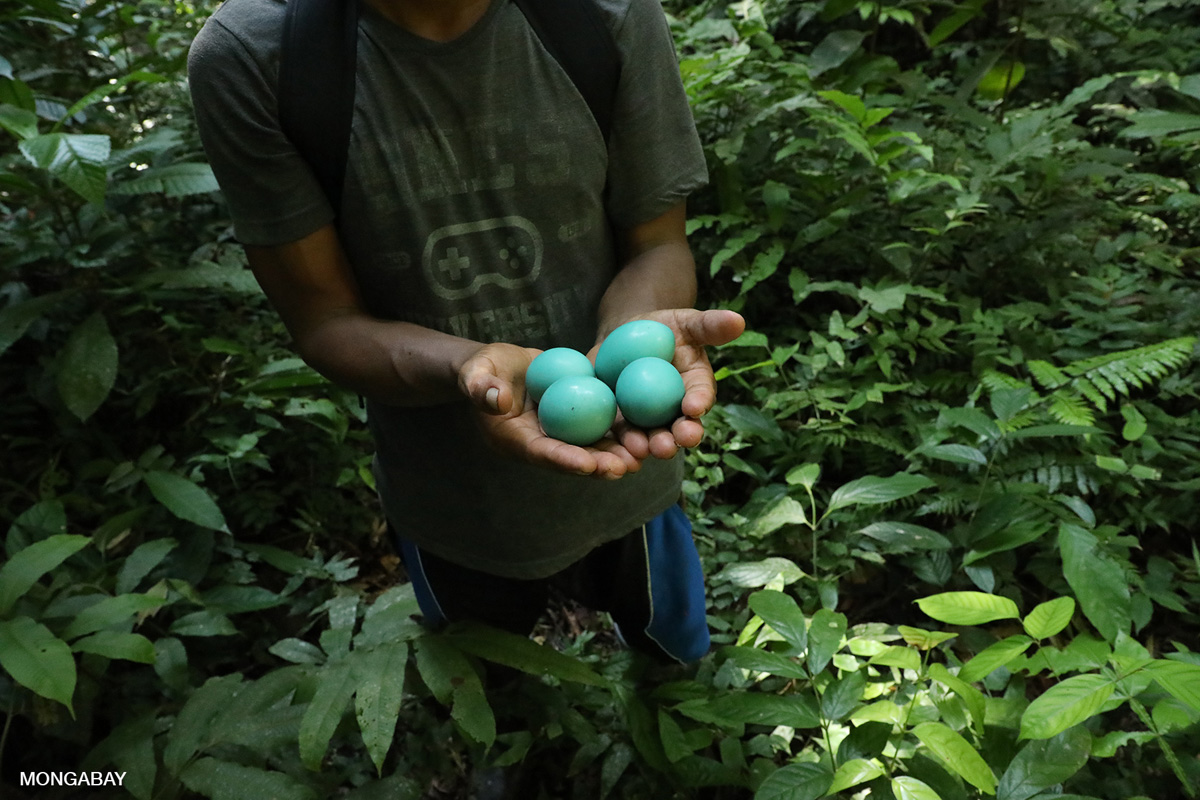- The new Tropical Forest Vulnerability Index (TFVI) will use satellite data to assess the impact of growing threats such as land clearance and rising temperatures on forests.
- Backed by the National Geographic Society and Swiss watchmaker Rolex, TFVI aims to identify forests most at risk, to be prioritized for conservation efforts.
- Researchers combined 40 years of satellite measurements and forest observations covering tropical forests worldwide to come up with the standardized monitoring system.
- In recent years, multiple stressors have pushed forests to a tipping point, causing them to gradually lose their ecological functions, including their capacity to store carbon and recycle water, the study says.
A new “vulnerability index” for the world’s tropical rainforests will use satellite data to assess the impact of growing threats such as land clearance and rising temperatures on forests, in an effort to identify and direct conservation resources to areas most at risk.
Backed by the National Geographic Society and Swiss watchmaker Rolex, the Tropical Forest Vulnerability Index (TFVI) was devised by more than 50 scientists internationally. Their research was published July 23 in the journal One Earth.
In coming up with the index, the researchers combined 40 years of satellite measurements and forest observations covering tropical forests worldwide. From the Amazon to the Congo Basin, the team tracked how forests responded to multiple stressors, including rising temperatures, drought and deforestation.

Unlike previous studies of rainforest vulnerability that were mostly local and could not be easily extended to other regions, the TFVI tracks ecologically important variables common to all forests, such as carbon dioxide uptake through photosynthesis, changes in the abundance and variety of species, and variations in water transfer between plants and the atmosphere. The data are then fed into a standardized model to assess rainforest health.
To provide up-to-date, early-warning signals for rainforests close to tipping points, the model will be continuously updated with new satellite, climate and field study data as they become available. The methodology and data will also be publicly accessible, allowing anyone to monitor whether vulnerability increased or decreased in specific areas.
“TFVI will allow scientists and policy makers, particularly those in tropical countries, to better understand the vulnerability of their rainforest resources, and invest on conservation and restoration efforts,” Sassan Saatchi, lead author and a scientist with NASA’s Jet Propulsion Laboratory at the California Institute of Technology in the U.S., said in a statement.

Among all terrestrial ecosystems, tropical rainforests are the richest in biological diversity, home to half of all known species of plants and animals. As major carbon sinks, they are also important and natural solutions to mitigating climate change.
In recent years, however, land clearance, rising temperatures, droughts and other stressors have pushed forests to a tipping point. Tropical forests worldwide are gradually losing their ecological functions, including their capacity to store carbon and recycle water, the study reported. Earlier this month, researchers studying the Brazilian Amazon found that a key stretch of the rainforest now emits more carbon dioxide than it absorbs.
According to the TFVI study, the Amazon, which is the world’s largest rainforest, is also the one most at risk. Decades of deforestation and fires, coupled with the global climate crisis, have made droughts more common, contributing to a feedback loop that could not only kill millions of trees, but also fundamentally alter the characteristics of the forest. Already, trees that thrive in moist environments are getting replaced by new species more adapted to dry conditions but less adept at storing carbon. Despite the crisis, conservation efforts have stalled; under Brazilian President Jair Bolsonaro, deforestation surged to a 12-year high last year.

Beyond the Amazon, the study also highlighted the impact of land clearance and climate stressors on rainforests on other continents. It found stressors and forest responses tended to vary from region to region. For instance, the Congo Basin in Africa is more resilient to water stress thanks to a history of droughts, which may have left its forests better adapted. Meanwhile, rainforests in Southeast Asia are suffering more from land use and fragmentation rather than climate change.
“A diverse suite of solutions will be required to address rainforest vulnerability given each ecosystem’s unique response to different stressors,” Nicole Alexiev, vice president of science and innovation at the National Geographic Society, said in a statement. “The solutions are not a one size fits all approach.”
Banner image of Amazon rainforest canopy by Rhett A. Butler / Mongabay.
Editor’s note: This story was supported by XPRIZE Rainforest as part of their five-year competition to enhance understanding of the rainforest ecosystem. In respect to Mongabay’s policy on editorial independence, XPRIZE Rainforest does not have any right to assign, review, or edit any content published with their support.
Citation:
Saatchi, S. , Longo, M., Xu, L., Yang, Y., Abe, H., André, M., … Elmore, A. C. (2021). Detecting vulnerability of humid tropical forests to multiple stressors. One Earth, 4(7), 988-1003. doi:10.1016/j.oneear.2021.06.002
FEEDBACK: Use this form to send a message to the author of this post. If you want to post a public comment, you can do that at the bottom of the page.
